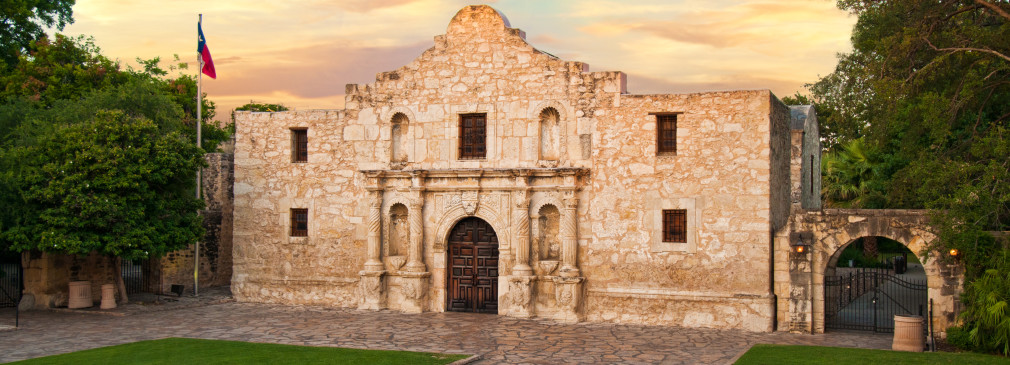
The wait is finally over. For the first time, Texas finally has a site on the UNESCO World Heritage list.
The San Antonio Missions — including The Alamo — were officially designated a World Heritage Site in July 2015. The five missions, which together form the largest concentration of Spanish colonial missions in North America, join an elite list of global sites that meet strict criteria to be selected as a cultural treasure that is worthy of protection as a source of irreplaceable heritage. Worldwide sites include such magnificent and diverse places as the Great Wall of China, the Pyramids of Egypt, the Great Barrier Reef in Australia and the Baroque cathedrals of Latin America.
Becoming the 23rd World Heritage Site in the United States, the San Antonio Missions join other national treasures such as the Statue of Liberty, Independence Hall and the Grand Canyon. It is only the third designation given in the U.S. in the last 20 years.
“The United States has a powerful and valuable history that encompasses a wide range of peoples, creeds and experiences,” said Crystal Nix-Hines, U.S. ambassador and permanent representative to UNESCO. “The San Antonio Missions represent an important element of our story, and a World Heritage designation allows them to be shared not only within the U.S. but also the wider global community.”
San Antonio’s Missions symbolize an era when the world was expanding, cultures were intertwining, and the global landscape was forever changed. As the largest collection of Spanish colonial architecture in the U.S., Mission Concepción, Mission San José, Mission San Juan, Mission Espada and Mission San Antonio de Valero (The Alamo) were built in the early 1700s to convert Native Americans to Christianity and help settle this region under the flag of Spain. They are a tangible representation of everything required for a functioning Spanish colonial mission system, all within a short trek along the San Antonio River.
“These Missions are a living example of the interchange of cultures bringing together the indigenous, Spanish, Mexican, and other influences that form South Texas today,” said Susan Snow, archeologist for San Antonio Missions National Historical Park who has been coordinating the community efforts to secure UNESCO World Heritage status since 2007. “The resulting cross-cultural exchange is the very essence of the great melting pot of the United States.”
The Alamo was the first Mission, well known in history as the site of the 1836 battle and its rallying cry of “Remember the Alamo!” It and the other Missions played an important role in early Mexican history and in the struggle for Texas independence. They proved critical to Texas’ iconic history and heritage, shaping the San Antonio landscape with their acequias, farm fields, ranchlands, and compounds. Indigenous people and those from around the empire of New Spain were brought together to share technologies, art and cultures.
At the crossroads of Texas history for over 300 years, the Alamo must be preserved for future generations. To that effect, for the first time, the Texas Legislature has appropriated $25 million in funding for Alamo preservation projects and future redevelopment of the Alamo Plaza. This is in addition to $6.5 million that was already set aside for Alamo maintenance and repairs.
The Texas General Land Office (GLO) and the City of San Antonio are creating a new advisory committee and will be working together on a new master plan for the site, including the construction of a new museum at the Alamo. This museum is planned to tell the story of the site from indigenous times through the early 18th century building of Mission San Antonio de Valero, to its abandonment and use as a fort in the famous 1836 Battle of the Alamo.
Music legend Phil Collins has donated a personal collection of Alamo artifacts that will be exhibited in the new museum. “Texans are deeply indebted to Phil Collins,” said Jerry Patterson, Land Commissioner when Collins donated the items in 2014. “Now these Texas treasures need a home where all can see them and study them and learn about how Texans won our liberty.”
“We won a huge victory by securing the World Heritage designation,” said San Antonio Mayor Ivy R. Taylor. “A joint master planning effort will maximize our ability to create a unique and authentic destination that tells the story of San Antonio and its ultimate urbanization.”
The UNESCO World Heritage designation opens up international fundraising opportunities and is a catalyst for socio-economic change and increased tourism and spending at sites around the world that receive the designation. For San Antonio, the impact will be even more significant, as tourism is one of the city’s top five industries, providing 1 in 8 jobs and more than $12 billion annually.
By 2025, the World Heritage Site economic impact on San Antonio and Bexar County is expected to generate an additional $44 million to $105 million in economic activity, with over 1,100 newly created jobs.
“Although the Alamo is best-known for the Battle of 1836, the global community views the Alamo’s historical significance in a much broader context,” said Alamo Director Becky Dinnin. “By engaging the Alamo Endowment and working in partnership with the city, we can develop a plan that honors those that sacrificed their lives at the Battle of the Alamo and the history of all the Missions collectively.”














